| Zeitschrift Umělec 2004/4 >> Report from a Country that Doesn’t Exist | Übersicht aller Ausgaben | ||||||||||||
|
|||||||||||||
Report from a Country that Doesn’t ExistZeitschrift Umělec 2004/401.04.2004 Jiří Ptáček | reportage | en cs |
|||||||||||||
|
On the night of December 14th I landed at the airport in Pristina, Kosovo where I went to participate in the third year of Videofest representing Umělec. This year’s subtitle was Homemade Marmalade.
Irony runs through the veins of Kosovo intellectuals. At the same time as Homemade Marmalade, Pristina also hosted the international exhibition, the Muslim Mulliq Prize — and they diligently described December as an “art season.” International artists and curators came to a country that has no official status, and therefore doesn’t exist. Perhaps it is only for a brief moment, but interest in the region’s art has peaked. Some of the artists were also invited to an exhibition in Tirana and, typical of such occasions, people used the short time frantically to exchange as much information as possible. Sometimes it really seems as though we are efficient modems — having access to the entire art world over the Internet. But still the problems such a community is facing are huge. Black Hour The organizers of the Videofest acquired a space for their purposes on the second floor of the Kosovo Museum. They set up a projection screen and an improvised auditorium in a very large hall. Seeing many guests shivering in the unheated room, one of the organizers, Tahar Alemdar, a young artist, apologized, “In previous years not many performing artists arrived,” Alemdar said. “This year we wanted to have as many of them as possible and we wanted them to bring as much art as possible. That is why we put all our budget into the airplane tickets and accommodation.” He didn’t apologize for the blackouts, however. The power stations and systems were damaged in the war, and blackouts are a daily problem. People either use petrol aggregates or simply wait. But during these dark hours they often express their disappointment about the postwar effort of the Kosovo representatives. Five years after the guerilla resistance against the Serbian police that was brought to an end only by the intervention of international forces, drinkable water and consistent electricity remain in short supply. The food in shops often has expired dates. Narrow streets are congested from morning on, and the city is expanding uncontrollably. In the last census, in 1997, Pristina had slightly over 200,000 inhabitants. As a result of the war, a massive wave of Kosovo Albanians surged the population to today’s number, estimated at between 500- and 600,000. Construction goes on everywhere and without building permits. Houses are never completed here, in order that additional floors can always be built. The Kosovo museum is nestled between two mosques not far from the new parliament in the capital’s center, but it is something that might be easily missed in the clutter. Pristina is becoming a sprawling version of the original small town, with block monumentality of administrative buildings and pre-fabricated apartment buildings dating to Tito’s Yugoslavia, new houses from prefabricated concrete blocks, and improvised annexes. The building boom never ceases to amaze; it is all the more interesting considering about 70% of the people are unemployed, earnings are low and prices are high. Building investment is only possible thanks to the support of the huge Kosovo diaspora. Every time I inquired about Pristina’s urban planning, I got the same answer: Everybody knows that the streets have to be widened and the city better arranged, but in the present circumstances that is an inconceivable task. Strong family ties play a strong role in Kosovo; they are a parallel power structure to the state. Any large urban modifications would demand the demolition of the old buildings; anybody trying to do that would have to negotiate with the interests of extended families. In the midst of that, the public face of the country, President Ibrahim Rugova, promised the Pope he’d support a project to build a Catholic church in Pristina. Albanian intellectuals shake their heads in disbelief and call that gesture international relations populism. Even though most are Muslim, Albanians have neutral relations towards Catholics. On Pristina’s main boulevard, a memorial to the most famous Kosovo saint, Mother Theresa, was put up; but inhabitants nonetheless insist that the infrastructure of the city calls for action other than the building of a religious edifice. Moreover, the church has been projected for a Pristina location presently occupied by a school associated with the history of national emancipation. Video’s Innovative Task There was a beginning. “Milka, by Sokol Beqiri from 1999, was the first video in the history of the Kosovo art,” said young theoretician Vesa Sahatçiu, the main curator of the Videofest, introducing her presentation on home video. “For 99% of the people video is not a means to art.” Sahatçiu simply summed up reasons why Pristina hosts a show oriented to one single medium alone. At the same time, she argued against repeatedly implying that videoart cannot be understood as an independent art subject in the context of visual culture. The short history of work with the video camera is an aspect of the revolt by a small group of progressive artists against the prejudices of the public, or against the conservatism of the official art scene. There is an art academy in Pristina, but its structure is stilted by a stale set of statutes and new media cannot be instilled in that. At the same time, video is a financially accessible technology. During the presentations and discussions at Videofest, and in private conversations with artists, one could not but notice that video is currently the dominant way that the young generation expresses itself. The Kosovo sociologist Sezgin Boynik provoked impassioned discussion during his lecture on music videos, and his allusion to Kosovo artists’ tendency to pretend amateurism. In reactions, the word “pretend” was dropped; but a lot was said about the importance of real life conditions for the Kosovo artists (the equipment dictates the method). The fact that the most successful of the young artists, Jakup Ferri, creates his videos with an analog camera, working in a country with such a difficult economic situation, can’t be comprehended as anything but as one making a conscientious choice for “pretended amateurism.” Ferri’s features have the form video-performances where the artist performs the lead role. He assumes the position of an artist from a forgotten and isolated country. In one shot, he is depicted in a recording studio where the voice of John Lennon is heard from one speaker shouting for Yoko Ono, and in the other loudspeaker, Yoko calls for John. Ferri added to that celebrity cacophony by shouting out his own name. The difference between Ferri and his rockstar counterparts, is significant. John and Yoko were recording together, pretending isolation. When Ferri, performed, he really was alone. In another, he shows the curators his portfolio and calls on them to buy his works, insisting that in the future he might become famous. Surprising is that he does that so carelessly, his portfolio hardly says anything. Nevertheless, it is thanks to Ferri’s acted videos that curators discovered the artist, including his “Skimped Teleshopping.” The bitter humor and mythologizing of the Kosovo artist’s unique conditions finally bore fruit. Happiness and Sin, Albanian Style Kosovo today is ethnically very monolithic. The progressive visual culture is also a solely Albanian thing. Contacts with the Serbian minority in Kosovo, as well as with neighboring Serbia, are disrupted. It is a social consequences of the ethnic war that the Albanians aren’t trying to seek out new links with Serbia. But they remain bound to each other, by the frozen dealings concerning the independence of Kosovo, and the region’s subordination to the UNMIK force—a very bureaucratic organization unable to find solutions for problems associated with the semi-existence of the country. Local artists react with a critical art of a particularly political bent. The most interesting of these is a young Pristina artist named Albert Heta who presents the most distinct intervention into the paralyzed society of Kosovo and the whole Balkans. His Kosovo Embassy in Cetinje, Montenegro was featured in Umělec 03/2004. Recently, he has managed other daring feats. He incorporated into a TV broadcast a trustworthy record announcing Kosovo independence. Viewers had the opportunity to experience a few minutes of euphoria watching an act for whitch they’d been waiting for years. It was not long before the public was disappointed, realizing that the TV statement was nothing more than an art project. Similarly, he called out when he modified a British Airways billboard beckoning people to visit Britain; he inserted text saying that visas are no longer required. The British Airways office was flooded with questions from Albanians hoping to take advantage of this “unbelievable” offer. In his projects Heta tries to simulate situations corresponding to the rules of a normal world and he experiences (or enables us to experience) the abnormality of the present regime. “My project is happiness,” he says laconically and with a bitter smile. And bitter happiness is a leitmotif of his video Bang, bang which uncharacteristically is not an intervention. He used an accidentally discovered audio recording with the story of an Albanian woman who crossed the Albanian border during the war. The viewers can hear her voice while reading the English translation of her story. The violence and intimidation that the woman experienced from the Serbian police is an authentic distillation of the filth of the recent conflict. The repeatedly expressed gratitude to God, that nobody from her family died, resounds in our ears as the substance of happiness is reduced to its most essential unit: How to survive. The Kosovo situation is interpreted differently by Alban Muja. Currently living with his family in Pristina, he returns to create in the ethnically mixed Mitrovica, his home town—a town in the patrolled zone where only Serbians currently live. For a new project called Mitrovica, Museum of Contemporary History he used a photo of a bridge dividing the Serbian and Albanian parts of the city. The imaginary Museum of Contemporary Art is the bridge itself. It can be crossed by holders of foreign passports only; due to safety concerns, the city’s inhabitants are not allowed to use it. Something originally created to enable connection has paradoxically transformed into a tool that divides. Muja’s other work—videos and manipulated UN Mission in Kosovo (UNMIK) passports—penetrates the motifs of national and linguistic identity. In his interest he is not alone. Tahar Alemdar sprayed the inscription Ferrari on a red flag with a black eagle (an Albanian flag that the Kosovo Albanians have spontaneously taken up as their own). Driton Hajredini in his video Sin visits a confessional and asks: “Is it a sin that I have been born an Albanian in Kosovo? The helpless Christian priest answers him in phrases about prayers. In projects, such as those of Muja an Hajredini, we are witness to a blend of seriousness and irony that they employ to realize art primarily as a proof of destroyed and sought-after values. In a substantial portion of the art of Kosovo we can recognize an erotic appeal pronounced as a self-ironic gesture in the midst of interpersonal disasters; it is pronounced with the awareness that it probably won’t influence the surroundings much. Art Award Towards Your Own Identity The Muslim Mulliqi prize is a step towards strengthening Kosovo Albanian identity as a specific nation with its own culture. Founded by the Kosovo Ministry of Culture in 2003, the award carries the name of the most important representative of Kosovo art from the 60s to the 90s. Its announcement is linked with an exhibition in the Kosovo Art Gallery, for which a foreign curator is invited to come and select the participants. Last year Najda Zgonik from Ljubljana had that responsibility; this year it was Gezim Qendro from the Tirana Art Gallery. As a rule, the exhibition has an international character. Qendro employed the motif of Glocal, a term used to describe the intersection of global art models with local presentations, traditions and problems. In the Kosovo Art Gallery they created a confused, non-articulated presentation in which the gallery was filled with numerous different works; but in the end the prize was awarded to one of the most talented artists from Kosovo, Dren Maliqi. A 3,000 Euro award was divided with Mario Rizzi, an Italian. Rizzi attracted the commission with a video-documentary interview with a Belarusian woman who is becoming a citizen of the European Union. The success of Rizzi’s unoriginal video was surprising as there were many more interesting works at the exhibition. For example, there was a video by Rudin Xhaferi of a group of Albanians in the middle of a busy crossroad staging a picnic. They didn’t disturb the drivers and the drivers tolerated the arbitrariness of the men in conversation. There was also a superb cycle of manipulated shots by Bulgarian Luchezar Boyadjiev entitled On Vacation. Here, the artist removed riders from horses of equestrian sculptures, noting that “Animals are unlike their ‘masters,’ who are actually our heroes; they do not take vacations. But heroes also need to take a vacation once in a while. If not, public space will explode with symbolic investment of all kind. And that’s dangerous.” In Pristina, where monuments of Serbian writer Vuk Karadzić and Montenegrian poet Petar Petrović were torn down in 1999, there now stands an equestrian statue of Gjergj Kastriot Skenderbeu, an ancient protector of Albania from Ottoman suppression, the memorial to Mother Theresa and a realistic statue of a fighter of the UCK with a revolver in his belt and a machine gun in his hand. This new ideological “netting” of Pristina’s public spaces enriches Boyadjie’s project for the truly glocal with a warning aspect. As to Rizzi, his common hall with Malliqi was the only one where they used the generous concept of space and a mutual interaction of works. The light from Rizzi’s projection was the only source for Malliqi’s monumental inscription HOPE, whose almost invisible shiny lettering contrasted slightly against a matte white wall. Exit: The Crossroad of a New Dynamic There was already a discussion of art in Kosovo in Umělec 3/2003. For many years the important art events took place in cafeterias and restaurants. Last year this changed, mainly thanks to Exit, the Contemporary Art Institute. It was founded in October 2003 with offices in Pristina and a gallery in Peja. Exit’s budget will be subsidized by the German Kulturstiftung des Bundes and Project Relations until October 2005. Exit in Pristina is a true manager of domestic art activities. It organizes seminars and discussions called the Laboratory, providing an education alternative to the more conservative art academy. It also oversees publication of the only art newspaper in Albanian—Arta. They aren’t just concerned with the domestic scene but also take an interest in the wider Balkan region, and happenings beyond. It is no accident that the last volume of Arta is dedicated to Anri Sala. His exhibition in Peja was fantastic for the local community. The world-famous Albanian artist visited the gallery and added to three videos at the exhibition a collected presentation of his works with a commentary. Peja is a one and a half hour drive from Pristina in the direction of the Macedonian border. It has about 100, 000 inhabitants and at first sight looks like a charming but remote small town. But it plays an important role for the art scene of Kosovo. The Albanian majority had been forced out. Before they could return, the Serbians destroyed 80% of the city. In 1999, Sokol Beqiri, a well-known painter at that time, and Erzen Shkololli tried different ways in which art might better engage with contemporary events. The festivity of happenings at a completely destroyed market became the first presentation of an independent art scene after the end of the war. And Beqiri became the main representative of a new wave in art. That was when Milka was created. A parable about war assembled from pictures of traditional cattle slaughter and mechanical soldiers crawling on the ground, Milka’s dark pessimism is not an empty effect. Beqiri persists in returning to experiences of war and violence. He projected a pink inscription, Think Pink, on a bunker above the city. In a new video Superman he combined the cute world of Teletubbies with an interview he had given to some TV crew, where Beqiri remembers how he tried to hide from the Serbian soldiers in his own house. When he begins to talk about the fear he felt and had been trying to suppress in front of his family, he burst into tears. Today Beqiri and Skhololli work as coordinators of the gallery’s exhibition program. They rented an intimate space in a one story building and modified it for exhibition purposes. Beqiri says: “Of course we could have exhibitions of local artists all year round. But we prefer to invite artists and curators from different countries. We have here Inke Arns from Berlin, who produced the exhibition Where am I (and are all these people)?, in which Christoph Keller and Daniel Pflumm participated. And there was Merry Ramadan, the collective exhibition on the theme of Islamism. Croatian artists have exhibited here. And the first person to exhibit here was the Albanian Gentian Shkurti, with the project Go West, a computer shooting game in which you are leaving the Albanian coast in a motor boat just like the Albanians departing Albania for Italy illegally.” Because in Exit they know that a gallery in a small town won’t be visited by people for the sake of it, they organize bus trips on occasion of the openings. Back to Videofest A week in Kosovo gave all Videofest participants the opportunity to observe the transformations in the structure of local art life. It would be misleading to assume that the art scene is coming to par with the rest of Europe. Even Exit gallery is unsure whether it will still exist at the end of 2005, and the gallery in Peja is still the only independent gallery. The festival theme, Homemade Marmalade was more than just a fitting name for the festival that managed to slap together conditions for the presentation of dozens of videos from Croatia, Bosnia, Slovenia, Turkey, France, Finland, USA, and the Czech Republic. What doesn’t change is the fact that there is no art market in Kosovo and that the interest of foreign curators have only scratched the surface of regional art activities, even though the Balkans are at the top of their interests. But the visual art of Kosovo has no other possibilities, until there are changes in the structure of the country. In one interview with Dren Malliqi, who is employed in Exit, I was surprised that he is unconcerned by the insecure future. In Kosovo they have long been accustomed to short horizons. But, as Malliqi so aptly stated in the gallery with repeated inscriptions: I need a radical change.
01.04.2004
Empfohlene Artikel
|
|||||||||||||
|
04.02.2020 10:17
Letošní 50. ročník Art Basel přilákal celkem 93 000 návštěvníků a sběratelů z 80 zemí světa. 290 prémiových galerií představilo umělecká díla od počátku 20. století až po současnost. Hlavní sektor přehlídky, tradičně v prvním patře výstavního prostoru, představil 232 předních galerií z celého světa nabízející umění nejvyšší kvality. Veletrh ukázal vzestupný trend prodeje prostřednictvím galerií jak soukromým sbírkám, tak i institucím. Kromě hlavního veletrhu stály za návštěvu i ty přidružené: Volta, Liste a Photo Basel, k tomu doprovodné programy a výstavy v místních institucích, které kvalitou daleko přesahují hranice města tj. Kunsthalle Basel, Kunstmuseum, Tinguely muzeum nebo Fondation Beyeler.
|







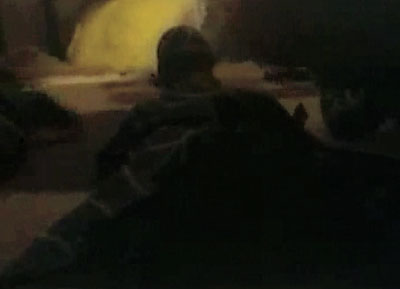





























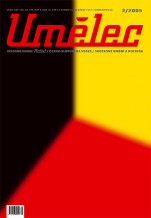
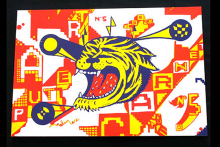
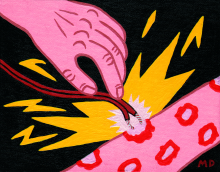
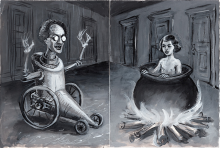


 We Are Rising National Gallery For You! Go to Kyjov by Krásná Lípa no.37.
We Are Rising National Gallery For You! Go to Kyjov by Krásná Lípa no.37.
Kommentar
Der Artikel ist bisher nicht kommentiert wordenNeuen Kommentar einfügen